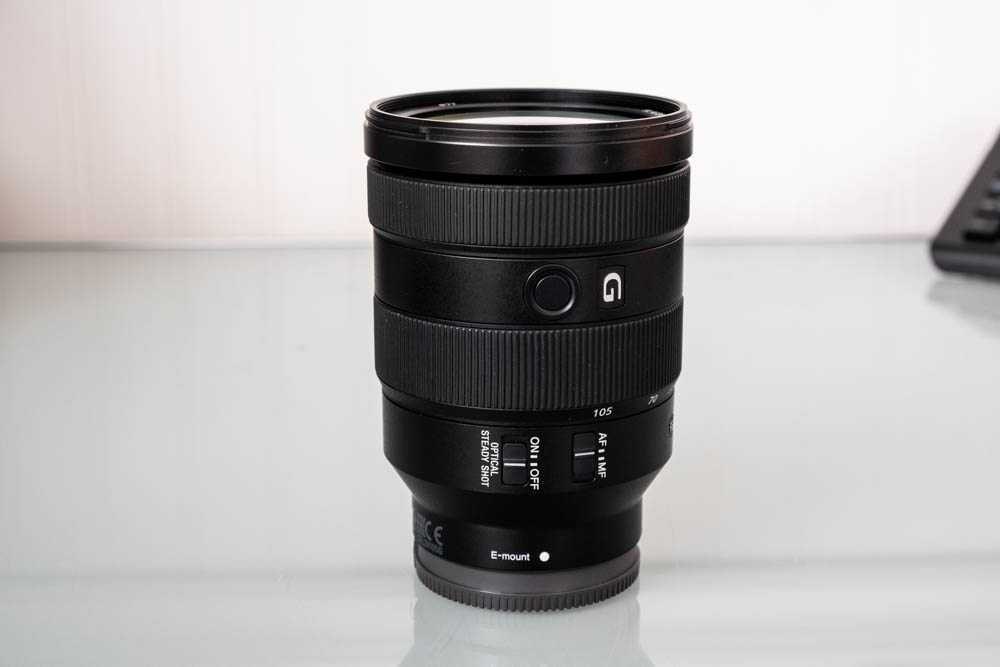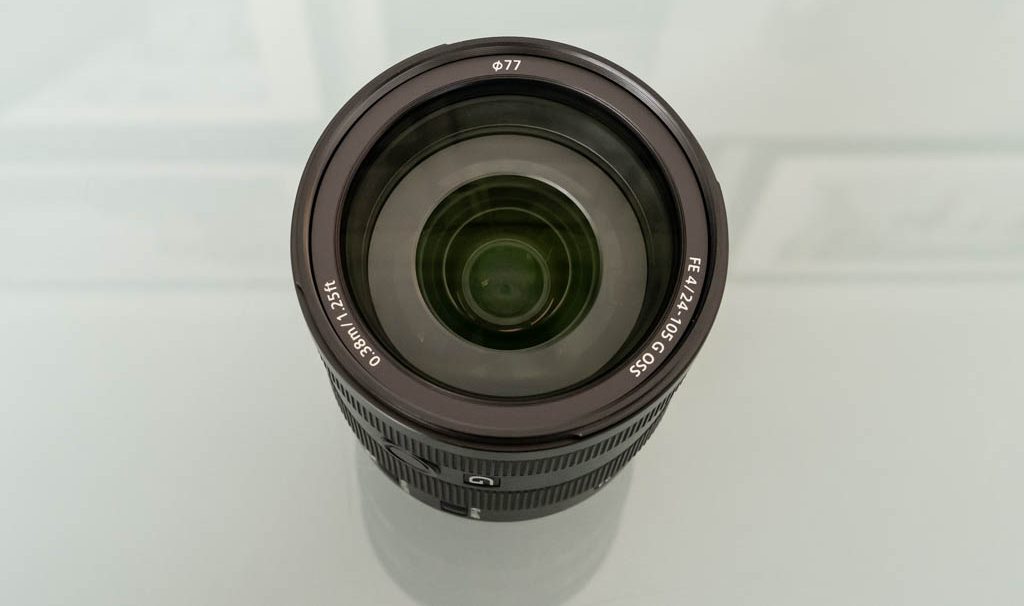
I recently made the switch from Canon to Sony after many happy and productive years as a Canonista, and the very first lens I bought was the lens I’m reviewing today—the Sony FE 24-105mm f/4 G OSS lens. This is a lens that comes very highly rated by Best Buy customers, consistently garnering 5-star reviews. So I’m very interested to see if it can live up to the hype!
Is this the best all-round Sony lens on the market? Let’s find out.
Decoding the letters on the Sony 24-105mm lens
First of all, let’s break down the specs on this lens as codified in that mouthful of a name. The FE designation refers to the fact that this lens is designed to work with Sony’s full-frame cameras like the a7 III and the a9 II. It is also compatible with other E-mount too, however, like the a6600. Just to clarify, all FE lenses will work with all E-mount cameras, but only FE lenses will work with full-frame lenses.
The focal length at 24-105mm gives us quite a bit of leeway in terms of what we can shoot with this lens, and this is why it is considered an all-rounder. You can shoot architecture, landscapes, street photography, even headshots, and portraits. I would only shoot headshots at 70mm and above, however, as this is the most flattering range in terms of focal lengths.
Constant maximum aperture
The big difference between this lens and something like the 18-135mm f/3.5-5.6 lens is that the 24-105mm lens can maintain an f/4 aperture all the way through the focal range, while the 18-135mm lens can only get down to f/3.5 at 18mm and f/5.6 at 135mm. When I’m shooting portraits I want to be able to get my aperture as wide as possible so that the background is more out-of-focus. The wider the aperture the more out-of-focus that background will be. The fact that the 24-105mm can give me an f/4 aperture all the way through is one of the big advantages of this lens.
Sony G lenses are top quality
The 24-105 carries the fables G designation which means it is among the best lenses that Sony produces. I read somewhere that “G” stands for “Gold”, which might be true, but you would think they would colour the letter gold if that were the case, right? Anyway, you can think of Sony’s “G” much like Canon’s “L”—it means you’re working with the best lenses. Incidentally, Nikon doesn’t have a comparable letter designation; as far as I’m aware they just put a thin gold band around the barrel of their best lenses.
The other high-end lens type that Sony makes is the Zeiss range, like the Sony Sonnar T* FE 35mm f/2.8 ZA and the Sony Sonnar T* FE 55mm f/1.8, both of which I’ve had the privilege of reviewing in the past.
Read my review of the Sony Sonnar T* FE 35mm f/2.8 ZA
Read my review of the Sony Sonnar T* FE 55mm f/1.8 ZA
Stabilization
The final set of letters in the name, OSS, stand for “Optical Image Stabilization”, and this is, in my opinion, one of the standout features of the 24-105mm lens. Image stabilization allows you to hand-hold your camera at lower-than-usual shutter speeds and still get a sharp image—provided your subject doesn’t move of course! It also helps you to shoot smoother video and this is what excites me. When I’m shooting stills I will increase the ISO as high as possible before I’ll put the shutter speed in the red zone, as you might put it. And with the amazing high ISO performance of the a7 III I have a lot of leeway to pump the ISO. But with the in-built image stabilization of the a7 III plus the stabilization in the 24-105mm, this is an awesome combination to shoot video with.
Build quality
As expected from a high-end lens, the all-metal construction of the 24-105mm is superb. At 663g it has a weighty that gives you confidence that this is lens built to last. It is also dust and moisture-resistant. When I mounted it on my Sony a7 III it does cause that set up to feel a little imbalanced and front-heavy, and in fact, the a7 III is a few grams lighter at 652g. Adding a battery grip is a good way to even things out though.
Lens controls
On the lens barrel itself, you have the zoom ring and focus ring. The focus ring rotates very, very smoothly, which makes this a nice lens focus manually. The zoom ring takes much more effort to turn, and I think the reason for this is to make it more difficult to shift accidentally. The lens is also completely free of any zoom creep which can happen with some lenses when you point them downwards and the force of gravity causes the lens to zoom. Also on the barrel, you have two switches; the autofocus/manual focus switch and the Optical Steady Shot ON/OFF switch. Finally, there is a single button on the left-hand side of the barrel that you can customize. It’s known as the “Focus Hold” button and it actually took me a while to figure out how to customize this button, partly because I didn’t know the correct name for it. By default, it causes the camera to autofocus, but you can assign 96 other functions to it!
Conclusion
I think this is an excellent lens and I’m very happy with the quality of photos and videos that I’ve been able to capture with it. However, I do find that maximum aperture of f/4 to be a little bit limiting. I love shooting with the shallow depth of field that I can get with something like the Sony Zeiss lenses I mentioned earlier, or even the Sony FE 85mm f/1.8 which is a relatively affordable lens. The other downside is the weight; this is a heavy lens if you’re planning to carry it around on a day-to-day basis.
All-in-all, I think if you buy the Sony FE 24-105mm lens with the above-mentioned caveats in mind you will be very happy with it, so it gets a thumbs up from me. This is for sure the best all-round Sony lens you can buy.








